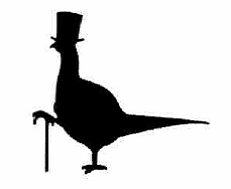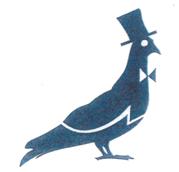
House of Fraser held to account by Jack Wills
In the final chapter to the successful trade mark infringement proceedings brought by Jack Wills Ltd against House of Fraser , the High Court has undertaken an assessment of the profits that the defendant retailer has to pay Jack Wills.
This decision provides a useful explanation of the factors to be considered when undertaking an account of profits and should assist future litigants when calculating its likely value and deciding whether an account of profits would be the more appropriate remedy.
Background
The Claimant, Jack Wills Ltd, was founded in Devon in 1999 and is a leading clothing retailer selling its own brand of British heritage-inspired casual clothing targeted at 16-24 year olds (although it sells to consumers outside of this bracket).
Jack Wills uses a logo consisting of a silhouette of a pheasant with a top hat and cane (referred to as "Mr Wills") which is embroidered onto many of its items of clothing in a variety of colours. The black and white version of the logo (which was registered both as a UK and Community trade mark) is displayed below on the left:


The Defendant, House of Fraser (Stores) Ltd, operates a chain of department stores across the UK. In addition to offering a variety of well-known clothing brands, it also sells its own range of clothing and housewares under the brand name "Linea". From November 2011, House of Fraser introduced a logo consisting of a silhouette of a pigeon with a bow tie and top hat on a selection of its "Linea" menswear garments – a representation of which can be found above on the right.
In October 2012, Jack Wills discovered the sale of the "Linea" menswear garments displaying the pigeon logo and commenced proceedings for trade mark infringement and passing off against House of Fraser the following month.
In January 2014, the High Court concluded that Jack Wills' logo had been infringed by House of Fraser's pigeon logo. The judge concluded that there was a likelihood of confusion between the two logos due to a number of factors; including the distinctive character of the "Mr Wills" logo and the conceptual similarity of the marks. Following the decision, Jack Wills applied for an account of profits.
Decision
The parties agreed that House of Fraser had used the pigeon logo on its "Linea" products from November 2011 until March 2013 and that the gross profit from sales of those products was £591,532. Jack Wills argued that it was entitled to all of the profits from the sales. However, HHJ Pelling QC, who was sitting as a High Court judge, held that Jack Wills was entitled to 41% of the net profits from House of Fraser.
Principles to be applied
The judge noted two general principles that needed to be balanced against Jack Wills' claim, namely that:
-
An account of profits was not a penal remedy. Instead, it was a mechanism by which an infringer is required to pay to the trade mark owner all profits properly attributable to the infringement; and
-
If a trade mark owner elected to accept an account of profits as a remedy in preference to damages, it was required to take the infringer "as it found it", eg it could not argue that the infringer should have been more efficient in its sales or sold infringing goods at a higher margin.
The Court also noted that, as highlighted in the recent Court of Appeal decision Design & Display Ltd v Ooo Abbott[1], an infringing defendant is entitled to set off a proportion of its general overheads (attributable to the infringement) that would have sustained a non-infringing business. Of course, this raised two factual questions, namely, could House of Fraser show that:
-
The same overheads would have been incurred even if the infringement had not occurred? On this question, it was common ground that the infringement had no effect on general overheads.
-
The sale of infringing products would have been replaced by the sale of non-infringing products, which would have been sustained by the overheads used to sustain the infringement? On this question, the judge found that House of Fraser had sold similar non-infringing goods before, during and after the relevant period. He also noted that web sales should be treated the same as shop sales.
Apportioning deductions for overheads
The judge stated that, for an overhead to be deductible, the expenditure must be wholly or partly attributable to the infringer's trading activities as a whole, incurred during the relevant period.
Agreed overheads for which apportioned deductions were made were: (i) employment, (ii) property, (iii) establishment and (iv) depreciation. Those overheads on which there was some dispute (and which the judge was required to make various rulings) were: (i) operations, (ii) store support costs and (iii) finance.
In order to arrive at a fair proportion of deductible overheads, the parties agreed that dividing the deductible costs by the total sales area of House of Fraser's business and then multiplying that by the area occupied by the infringing goods was appropriate for apportioning property, depreciation and establishment costs (the "square footage basis").
The judge decided that the least unrealistic way of apportioning the other categories of overheads was on a "sales revenue basis" ie dividing deductible costs by total sales during the relevant period and then applying the resulting percentage to the infringing sales.
Further apportionment to account for infringement
The judge also considered whether there should be some further apportionment to account for House of Fraser's acts of trade mark infringement and passing off. He noted that, unless there was a finding that an infringement drove the sale, there had to be an apportionment to account for the fact that the profits were those properly attributable to infringing use, rather than all profits arising from the sale of an item.
In this case, the evidence did not allow one to conclude that the infringement drove the sale of the infringing products or was the essential ingredient in the infringing products. The same lines of "Linea" clothing were sold by House of Fraser both before and after the infringement (ie without the pigeon logo). There was no evidence that the inclusion of the pigeon logo had any significant or lasting effect on sales.
Balancing all of these factors, the judge considered that an apportionment of 41% of House of Fraser's net profits would strike a fair balance (based on a royalty rate of 1.5% for the use of third-party brands).
Conclusion
This decision, together with the recent Court of Appeal decision in Design & Display Ltd v Ooo Abbott, provides some much-needed guidance as to how to approach account of profits calculations, deductions for overheads and possible further apportionment for the infringing acts.
Of course, there will always be matters requiring additional judicial guidance to determine a fair apportionment based on particular facts. However, the reasoning applied by the Court seeks to strike a commercial balance when assessing a fair remedy for account of profits and should provide many litigating parties with a framework for negotiating and agreeing the amount payable following the trial of an infringement claim (and help avoid the need for further hearings).
[1] Design and Display Ltd v Ooo Abbott and another [2016] EWCA Civ 95
